By Erica and Matt Chua, on Tue Sep 30, 2014 at 8:30 AM ET I had only one goal for India: survive. Hours after I wanted to be in a hospital, between gasps for air, I wondered if my goal of survival was too ambitious. The trip between Agra and Varanasi started well enough. We had reserved beds in an air conditioned sleeper car, complete with fresh linen that was Four Seasons compared to our crowded and sweaty, jail-like experience in General Seating. Shortly after laying down to sleep though the ride took a turn for the worst: I was struggling to breathe.
.
To put it gently, I have terrible allergies. One could say I’m allergic to life, but that would be an understatement, I’m allergic to dead and inanimate objects as well. Luckily my allergies are manageable: avoid horses, animal pens, and untidy, pet infested homes. If exposed to such situations my body floods my head with mucus, constricts my airways, and, in extreme circumstances, makes my whole body break itch. Overall, my allergies can quickly create an uncomfortable situation.
.
Only four times in my life have I actually considered that my body could suffocate itself. The previous times I had access to medical attention. This time I was out of bullets, I tried everything I was carrying to no avail; I needed medical attention and I needed it now. I didn’t know where the train was, where I could get help, or at what point barely breathing would become not breathing. It was during this crises that I realized I was not carrying the right medicine to deal with such situations.
.
As soon as LOCAVORista awoke she began peppering me with questions about my obvious issue. I tried to ease her concerns, but it was hard to hide my condition. The train was moving too slowly, minutes felt like hours and I wasn’t getting better. Finally I admitted: I need to go to the hospital.
.
After finally arriving in Varanasi and surviving past dozens of hotel touts we arranged a rickshaw to a private hospital. I was quickly seated with a physician that had a US medical degree on the wall. He was convinced I needed to spend a night in the hospital, have a chest x-ray, and get a cortisol shot. Accepting that I would only spend a night in an Indian hospital if I were severely bleeding or unconscious, he finally wrote orders for me to receive nebulization. My 12 hour ordeal came to an end after 10 minutes on the magical machine.
.
This situation made me reassess what I carry to fight my allergies. Previously I carried an arsenal against allergies in general, but nothing to deal with an emergency. Allergies are uncomfortable, but a breathing emergency can kill. I didn’t worry about emergencies at home as medical treatments are always near; while traveling, help may not be available when it’s needed most.
.
Due to this experience I re-evaluated what I’m carrying, specifically adding Prednisone for emergencies. This deals with my specific condition, for others though carrying an EPI-Pen may save their lives. Below is a list of the things that I carry to deal with allergies and allergy-induced asthma. Obviously you should consult a specialized physician who knows your specific conditions before setting off.
.
- Fexofenadine HCL (brandname Allegra or Telfast). This is my stalwart against general allergies and available inexpensively, over-the-counter, globally.
- Diphenhydramine (brandname Benadryl). This is the ultimate over-the-counter allergy stopper. The problem is that it knocks me out, one to two pills of this over a 12 hour period and my allergies are gone; but I will be sleeping for that entire period. When things go bad this clears my system.
- Albuterol Inhaler–PRESCRIPTION ONLY (brandname Ventolin). This is an emergency inhaler that helps me breathe when allergies are overcoming me.
- Flovent Inhaler–PRESCRIPTION ONLY (no generic at this time). This is a “daily use” corticosteroids inhaler that I use when I’ve been having extended breathing issues (multiple days). I use it until I feel confident that whatever has been aggravating my allergies is gone.
- Prednisone-PRESCRIPTION ONLY. I was not carrying this at the time of my asthma attack on the Indian train, but should have been. For an allergy induced asthma attack this is a literal lifesaver. I won’t travel the third world without it again.
.
Do you travel with medical conditions? How do you deal with emergencies when you are far from professional assistance?
By Josh Bowen, on Thu Sep 25, 2014 at 8:30 AM ET 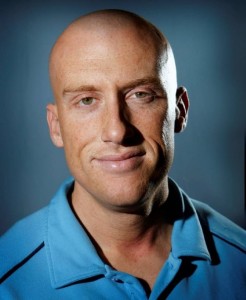 Cancer is real and serious concern for us all. The following blog is dedicated to Beth, who bravely battled breast cancer for 14 years, Claude Bowen, Sr who passed away in December from prostate cancer and the many other who have fought cancer head on and never gave up the fight. This is for you. Cancer is real and serious concern for us all. The following blog is dedicated to Beth, who bravely battled breast cancer for 14 years, Claude Bowen, Sr who passed away in December from prostate cancer and the many other who have fought cancer head on and never gave up the fight. This is for you.
Cancer
A word that strikes utter fear in people. And with good reason. As you see below the statistics are staggering. Every year, cancer becomes more and more prominent. In comes in all faces and types, packaged differently to wreak havoc on the human body. This post is not so much about the stats or what causes cancer but what can we do to prevent or slow the progress of this problem. This post is not to show you how smart or not smart I am as it relates to the disease. This about my grandfather, who was 88 years old and is put up the fight of his life against several types of cancer. Over the course of several months, I have saw the personal struggle he went under and the downward spiral of an independent country boy. It took hold of him and it didn’t let go. It is tough to watch but it shows how tough he was to continue to put up a fight against insurmountable odds.
This is also about my beliefs. Something that I often catch strange looks for and snide remarks about. However, I firmly believe in my heart of hearts that all things are possible through fitness. It is our fountain of youth, protector of disease and an absolute must for the human body. My motto is all things through fitness, it is the name of my website and is etched on my skin. I believe it because I have seen it.
I have seen people overcome disease, fight obesity and win, improve their personal lives and overall become better people. Fighting cancer is no different. Fitness plays an important part in the fight with all forms of cancer. Check these statistics from the National Cancer Institute:
Colon Cancer- Many studies in the United States and around the world have consistently found that adults who increase their physical activity, either in intensity, duration, or frequency, can reduce their risk of developing colon cancer by 30 to 40 percent relative to those who are sedentary regardless of body mass index (BMI), with the greatest risk reduction seen among those who are most active.
Breast Cancer-Most studies indicate that physically active women have a lower risk of developing breast cancer than inactive women; however, the amount of risk reduction achieved through physical activity varies widely (between 20 to 80 percent)
Endometrial Cancer-
About 20 studies have examined the role of physical activity on endometrial cancer risk. The results suggest an inverse relationship between physical activity and endometrial cancer incidence. These studies suggest that women who are physically active have a 20 percent to 40 percent reduced risk of endometrial cancer, with the greatest reduction in risk among those with the highest levels of physical activity. Risk does not appear to vary by age.
Lung Cancer- At least 21 studies have examined the impact of physical activity on the risk of lung cancer. Overall, these studies suggest an inverse association between physical activity and lung cancer risk, with the most physically active individuals experiencing about a 20 percent reduction in risk.
As you can see fitness can dramatically changed the diagnosis and prognosis of cancer. Think about what the statistics would be on people who exercised regularly who got cancer. I stand behind my belief that all things are possible through fitness, fighting cancer is not an exception to that rule. Regardless of activity level cancer affects us all. Our loved ones and even ourselves will be faced with this disease. The struggle and the will to live is the most important.
Through fitness you can fight and win. For those struggling with the disease, continue to fight and never give in. The spirit to beat it and the mindset is all you need. Keep fighting!
Yours in fitness,
JB
Selected References
National Center for Chronic Disease Prevention and Health Promotion and Centers for Disease Control and Prevention (1996). Physical Activity and Health: A Report of the Surgeon General. Retrieved June 26, 2009, from: http://www.cdc.gov/nccdphp/sgr/sgr.htm.
National Center for Chronic Disease Prevention and Health Promotion and Centers for Disease Control and Prevention (2008). Preventing Obesity and Chronic Diseases Through Good Nutrition and Physical Activity. Retrieved June 26, 2009, from: http://www.cdc.gov/nccdphp/publications/factsheets/Prevention/obesity.htm.
Slattery, ML. Physical activity and colorectal cancer. Sports Medicine 2004; 34(4): 239–252.
IARC Handbooks of Cancer Prevention. Weight Control and Physical Activity. Vol. 6. 2002.
Ballard-Barbash R, Friedenreich C, Slattery M, Thune L. Obesity and body composition. In: Schottenfeld D, Fraumeni JF, editors. Cancer Epidemiology and Prevention. 3rd ed. New York: Oxford University Press, 2006.
Lee I, Oguma Y. Physical activity. In: Schottenfeld D, Fraumeni JF, editors. Cancer Epidemiology and Prevention. 3rd ed. New York: Oxford University Press, 2006.
McTiernan A, editor. Cancer Prevention and Management Through Exercise and Weight Control. Boca Raton: Taylor & Francis Group, LLC, 2006.
Tardon A, Lee WJ, Delgado-Rodriguez M, et al. Leisure-time physical activity and lung cancer: A meta-analysis. Cancer Causes and Control 2005; 16(4):389–397.
Giovannucci EL, Liu Y, Leitzmann MF, Stampfer MJ, Willett WC. A prospective study of physical activity and incident and fatal prostate cancer. Archives of Internal Medicine 2005; 165(9):1005–1010.
Holmes MD, Chen WY, Feskanich D, Kroenke CH, Colditz GA. Physical activity and survival after breast cancer diagnosis. Journal of the American Medical Association 2005; 293(20):2479–2486.
Pinto BM, Frierson GM, Rabin C, Trunzo JJ, Marcus BH. Home-based physical activity intervention for breast cancer patients. Journal of Clinical Oncology 2005; 23(15): 3577–3587.
Meyerhardt JA, Giovannucci EL, Holmes MD, et al. Physical activity and survival after colorectal cancer diagnosis. Journal of Clinical Oncology 2006; 24(22):3527–3534.
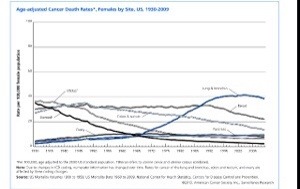
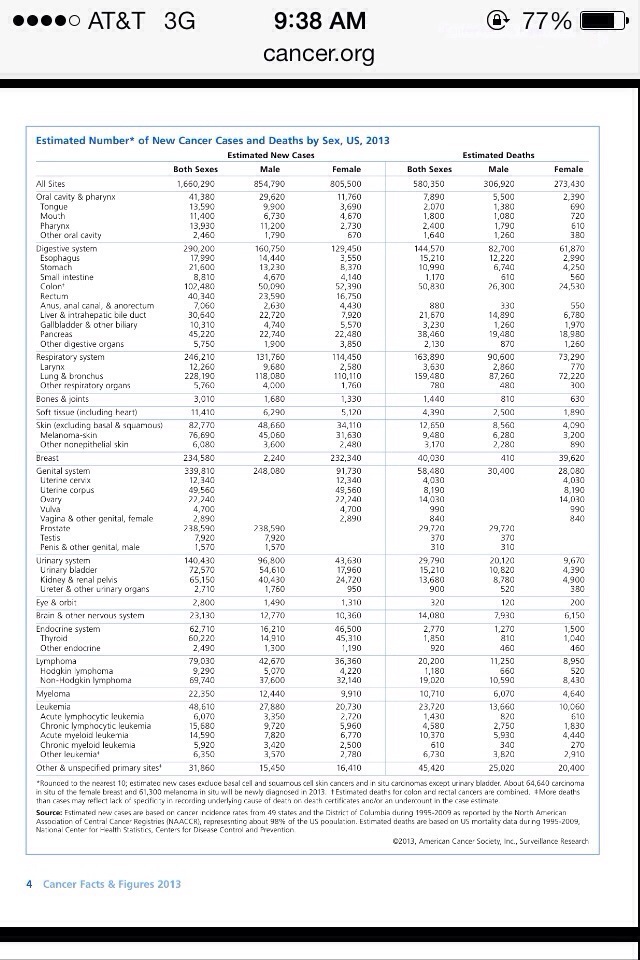
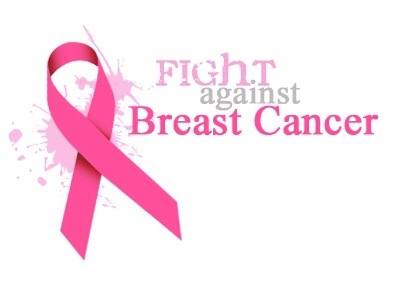
By Jonathan Miller, on Thu Sep 18, 2014 at 8:30 AM ET It is astounding to me how many nutrition blogs, books, websites and magazines there are.
In the United States alone, there are 2,500 diet/nutrition books on the market.
2,500? Holy cow! What for?
I digress though. After training for 11 years, I have found that most people go wayward on their nutritional plan in between meals and at night. People get the munchies and they want things to snack on. Chips, candy, chocolate and a litany of other nutritionally lacking foods become the staple of one’s snacks. This leads us into a false sense of control and snowball’s us off our well planned out nutrition plan.
 This can be solved, very easily, by picking more nutritious, easy access foods. 5 of which I consider the best snacks at my training desk. Always ready for when my blood sugar crashes and I need a quick boost of energy but cannot eat because I am training a client (eating while training clients looks awful by the way). This can be solved, very easily, by picking more nutritious, easy access foods. 5 of which I consider the best snacks at my training desk. Always ready for when my blood sugar crashes and I need a quick boost of energy but cannot eat because I am training a client (eating while training clients looks awful by the way).
So without further ado, here is my list of the 5 best snacks:
- Quest Bars You can define whether a food is good for you or not by the amount of ingredients it has in it (most of the time). Quest bars are the only protein bars I have seen that have fewer than 100 ingredients in them (joke). All joking aside, they come in a variety of flavors and are made up of all gluten free ingredients. For more information check them out here http://www.questnutrition.com/ingredients/
- Almonds I love almonds! There are a staple for me when I need something to get me through a couple of hours of training before I eat a meal. A handful of almonds can supply a sufficient amount of calories but also nutrients to get you through to your next meal or get your through a hard workout. Loaded with healthy fats, almonds can help in decreasing bodyfat (Omega 3s), decrease the chance for heart disease (Omega 3s) and decrease inflammation (ta da Omega 3s). Also, very versatile with almond butter and almond milk being a great substitute for peanut butter and milk.
- PB2 and Protein Powder A great combination to snack on to get your through the day. PB2 is a powder peanut butter that has 85% less calories than regular peanut butter. Add in a good protein powder (UMP by Beverly International is my go-to) and you have a great snack that has a lot of protein and a little bit of fat to keep you full for a few hours. Have a sweet tooth? Add some cinnamon and it tastes great!
- Rice Cakes You laugh but I love rice cakes. Especially when I need something quick and need something that has a crunch. This usually keeps my cravings to a minimum (I love crunchy foods) and goes best post workout when I need some carbs. You can add almond butter or some PB2 to make it more a meal, if you chose.
- Suja Those unfamiliar with Suja http://www.sujajuice.com/ it is a brand of juice that is cold pressured. Via their website here is how they describe the process: Cold Pressure, also known as High Pressure Processing retains food quality, maintains natural freshness, and extends microbiological shelf life without heating to high temperatures. After our juice is bottled, a high level of cold pressure is applied evenly to destroy pathogens and ensure the juice is safe to drink while preserving vitamins, enzymes and nutrients. These make great snacks that you can drink and pack all your nutritious fruits and vegetables into one drink. In my line of work where I sometimes preform 6-8 sessions in a row, I need quick and easy snacks to keep me going. I also need food ready so that I do not go without food and/or make the wrong choice on what to eat. These work great for me and hopefully they work great for you.
By John Y. Brown III, on Tue Sep 16, 2014 at 12:00 PM ET 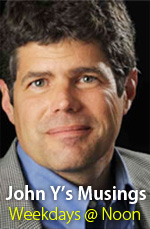 Weighing in. One last time. Weighing in. One last time.
8 months and 4 days ago I weighed 205.4 lbs and set goal for myself to get down to 178.5 lbs.
Today I weighed in at 177.1 lbs.
I did it.
But only for today. The point of this post isn’t to declare victory but to recommit to maintain this new way of eating and exercising. Daily.
Somehow posting about my diet on Facebook and providing updates helped keep me accountable and the encouragement I received from so many Facebook friends was a wonderful motivator.
Thank you. Very much.
And now….not the end of a diet but merely the continuation of a new lifestyle.
No secrets to this diet. Just eating a little less and exercising a little more. And doing it every day and being patient. Going slower to go farther was my motto.
===
This morning I was admiring my recent weight loss in the bathroom mirror as my wife and I were getting ready to go out for coffee. After my proud moment of self-satisfaction, I threw on a pair of jeans and wet my hair before combing it and began looking for a shirt.”
My wife walked in the bathroom to explain how our dog Macy was just showing off to her by proudly holding a spider in her mouth before it dropped out and ran away.
Wanting to change the topic back to my proud weight loss, I pointed to myself and said, “Well, what do you think?”
“What?” Rebecca answered quizzically.
“This.” I responded smugly pointing in a circular motion to my torso area.
“What? You got water on you?”
“No!” I said flustered. “I’ve lost 28 lbs.”
“Oh.” Rebecca responded laughing. “You are acting like Macy showing off having a spider in her mouth.”
“No I’m not.” I said defensively. “I don’t think it’s the same thing at all. First off Macy didn’t lose 28 lbs and, second off, I am not holding anything in my mouth.”
“OK.” Rebecca said laughing to herself.
“Do you have water on you?” I repeated to myself under my breath. “Really?”
“Well, I’m proud of both you and Macy this morning.” Rebecca offered in a consoling voice.
By John Y. Brown III, on Sun Sep 14, 2014 at 10:00 AM ET  Get up! Get up!
If you are like me and plan on doing nothing at all this Sunday, you ought to at least have enough pride to get up early and start right away!
Anything worth doing –even doing nothing –is worth doing well.
===
Sunday morning vanity conversation leading to disappointment
This morning I was admiring my recent weight loss in the bathroom mirror as my wife and I were getting ready to go out for coffee. After my proud moment of self-satisfaction, I threw on a pair of jeans and wet my hair before combing it and began looking for a shirt.”
My wife walked in the bathroom to explain how our dog Macy was just… showing off to her by proudly holding a spider in her mouth before it dropped out and ran away.
Wanting to change the topic back to my proud weight loss, I pointed to myself and said, “Well, what do you think?”
“What?” Rebecca answered quizzically.
“This.” I responded smugly pointing in a circular motion to my torso area.
“What? You got water on you?”
“No!” I said flustered. “I’ve lost 28 lbs.”
“Oh.” Rebecca responded laughing. “You are acting like Macy showing off having a spider in her mouth.”
“No I’m not.” I said defensively. “I don’t think it’s the same thing at all. First off Macy didn’t lose 28 lbs and, second off, I am not holding anything in my mouth.”
“OK.” Rebecca said laughing to herself.
“Do you have water on you?” I repeated to myself under my breath. “Really?”
“Well, I’m proud of both you and Macy this morning.” Rebecca offered in a consoling voice.
By Josh Bowen, on Thu Sep 11, 2014 at 8:30 AM ET
From a business perspective, this gentleman starts by going through what separates the top companies from everyone else. In particular, he uses Apple as an example. In his example he states that most companies will market in this order; what we do, how we do it and finally why we do it. He later explains that the most successful companies use the “golden circle” and start with why they do it first, followed by how and what. He argues that people will buy WHY you do something over how or what you do. Apple doesn’t have any advantages that Microsoft or Dell or any other computer company has. Apple just knows their why and they include it in all their marketing and branding. This separates them from everyone else.
This led me back to my book, 12 Steps to Fitness Freedom, where I talk about the “Power of the Why,” and why it is crucial to success or failure in fitness and literally everywhere else. I have included a part of it below. But take a moment and really do some soul searching on WHY you do what you do everyday. The why is driving you in every endeavor you choose to be apart of. Finding your why changes the game for you. It motivates you and inspires you to make necessary adjustments and changes to ensure victory on your challenge.
So I challenge you to find your “WHY” in all aspects of your life. It is crucial to survival. To be fair, I will share with you my “WHY.” I am completely driven to making a difference in people’s lives, positively. No matter what the venue, my goal and vision is to impact everyone I train or come in contact with in positive matter so they are better for it. At the end of the day I want people to say, “because of you, I achieved.” It is my why and it is my driving force, not only through exercise and fitness but also through leadership and constant development. Enjoy the below: The Power of Why (from Step 1 of 12 Steps to Fitness Freedom)
The greatest minds in the human races’ history have always asked one question, Why? Einstein, Edison, and Newton all posed the question of why and no matter how many times they failed they constantly pushed forward. The Power of Why.
Think about a child who is inquisitive, what do they ask repeatedly? Why? Why is the ocean blue? Why do I have to go to sleep at 8? Why do I have to go to school? Why why why? Their nature is to constantly pose the question of why so they can consistently learn and understand the why.
The why gives reason behind decisions and clarity behind things that are not yet understood. Reason and clarity are very big when discussing fitness goals:Why is getting in shape important to you? Why will having bigger arms or a smaller waist positively impact your self esteem? Why?
As you embark into a fitness regime it is important to remember why you are starting. From the mere example of you reading this means, on some level, you are interested in fitness. Either you; are wanting to start, wanting to continue what you started or are looking for fresh ideas to keep you going. Either way, we all go through a pre-contemplation phase when it comes to working out.
Some decide to put both feet in and go after it others keep one foot in and the other out and then there are those that never start. The decision is a personal one but once we cross into the stage of doing something about our current situation, it is important to remember why we are doing it.
So here is what we are going to do…
I am going to generalize everyone and pose the following questions:
1. What outcomes are you wanting/expecting from exercise program?
2. Which of those outcomes is the most important to you?
3. Why is that so important to you?
The answers to any of those questions can and will vary considerably. Everyone starts or continues and fitness program for different reasons. The importance to find the why behind the what.
Is the answer to number one; more energy, less body fat or to be healthier? We can easily put those answers into three categories; how you feel, how you look and how your insides are functioning. Either way these are important to you.
Now we must pick one as our sole goal to focus on. This should be the driving force on your fitness journey, the thing you cannot live without. Once we have answered that we are on our way.
Lastly, we must instill the Power of the Why. Why is that goal important to you and why is it the most important to you? The answer will define your fitness experience and adherence. Is it because you’ve always wanted abs or because you felt better when you were 20 lbs lighter? At the end of the day we all do this for an emotional reason and to boost how we feel about us. Nothing more, nothing less. Fitness changes us for the better by supplying confidence and increased self esteem we may not have gotten from anywhere else. This is the
Power of the Why!
Never forget your why and the reason you do this. On the days when you don’t feel well or you’re stressed from work. Remember your why. It is powerful beyond all comprehension.
PS: Write your most important goal down and the reason it’s so important on your mirror or car dash. When times get rough and you feel like quitting look at it and remember why you are here. Positive thoughts and energy creates positive outcomes.
By Beth Gamulka, on Thu Sep 4, 2014 at 10:00 AM ET  Before I went to medical school, I spent 4 wonderful years at college studying the history of science and medicine. I especially loved the books on my reading lists that captured a story about a past medical discovery or epidemic. While I had no medical expertise at the time and simply wanted to do passably well on the MCAT so some medical school would accept me, the stories of the flu epidemic of 1918, the discovery of penicillin, the Wexner report and the development of formal medical education captivated me. They gave me context and allowed me to understand the path the practice of medicine had taken prior to my interest in the profession. Before I went to medical school, I spent 4 wonderful years at college studying the history of science and medicine. I especially loved the books on my reading lists that captured a story about a past medical discovery or epidemic. While I had no medical expertise at the time and simply wanted to do passably well on the MCAT so some medical school would accept me, the stories of the flu epidemic of 1918, the discovery of penicillin, the Wexner report and the development of formal medical education captivated me. They gave me context and allowed me to understand the path the practice of medicine had taken prior to my interest in the profession.
Medical school, residency, medical practice and parenthood do not leave much free time for pleasure reading. While it is still wonderful to escape with a novel, I still gravitate to non-fiction works that focus on medicine. A few years ago, I gave a lecture to my colleagues about books that every doctor should read. While it is still prudent to keep updated on new research to help our patients, these books are designed to help physicians (and non-physicians) maintain perspective. Here are a few of them:
History of Medicine:
- The Immortal Life of Henrietta Lacks by Rebecca Skloot is a well-researched account of the history of HeLa cancer cell line and the woman whose cancer launched a medical revolution.
- Bad Blood by James H. Jones is history of the Tuskeegee Syphilis experiment that the Public Health Service ran from 1932 until 1972. African-American men with syphilis were studied over decades to learn about the natural course of the disease. However, they were never treated with penicillin even after the antibiotic’s availability increased in the 1940s.
- The Emperor of All Maladies by Siddhartha Mukherjee is a biography of cancer. It is long and detailed and clearly shows how recently many advances in cancer treatment have developed and how little oncologists really knew even 50 years ago.
Meditations on the Profession:
- Complications by Atul Gawande, a surgeon and prolific writer, is a collection of honest essays written during and after surgical training.
- The Youngest Science: Notes of a Medicine-Watcher by Lewis Thomas was his third collection of well-written and thoughtful essays reflecting back on his career as a successful academic and physician. I remember reading this in high school and deciding to become a physician.
- The Real Life of a Pediatrician, edited by Perri Klass is a collection of candid stories following the path from student to veteran doctor. While I love every book that Perri Klass has ever written (and can admit that her memoir A Not Entirely benign Procedure allowed me to survive the summer of 1988, also known as the summer of med school applications and MCATs), the many voices in this collection are honest and engaging. Let’s face it: pediatricians are generally nice people and I like reading about them.
Books that can influence the way we practice:
- Forgive and Remember: Managing Medical Failure by Charles Bosk, follows fictional surgical teams in a teaching hospital and is one of the first books ever written on medical error.
- The Checklist Manifesto by Atul Gawande, provides a 21st century approach to patient safety using the expertise of the aviation industry.
- How Doctors Think by Jerome Groopman is an extremely honest and thoughtful look at medical error and cognitive error. It explores why doctors succeed and why they err, how they can embrace uncertainty and how patients can help doctors avoid error. I tell every trainee that I teach to read this book in the hopes that s/he will incorporate these learning points in the practice of medicine.
Happy reading!
By Josh Bowen, on Thu Sep 4, 2014 at 8:30 AM ET 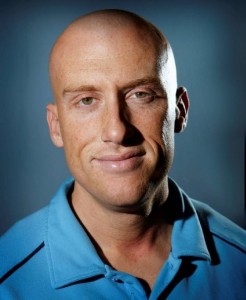 The title of the blog may seem confusing and even appalling to most. It may lead you to question my sanity after 11 years as a personal trainer. “How does he not know what his job is?” Just hold on for a minute. For years I have had this approach when it came to clients, focus on more than fitness and nutrition. The title of the blog may seem confusing and even appalling to most. It may lead you to question my sanity after 11 years as a personal trainer. “How does he not know what his job is?” Just hold on for a minute. For years I have had this approach when it came to clients, focus on more than fitness and nutrition.
See I believe fitness is a vehicle that we use to improve people. People HATE exercise, for the most part. For one reason or another most people disdain the process of trying to get into shape. They have goals but most of the time those goals are deeper than fitness. They impact every aspect of their lives. So, if it deeper than fitness why do we not concentrate on more than fitness? This approach may actually help you jump start your fitness and go on a quest to better yourself.
In my mind exercise/fitness and good nutrition affect every aspect of my life. Therefore, not only do I affect the physical part of me and they way I look but I also affect several other aspects of my life; relationships, better sleep, energy, confidence etc. So if you knew that working out would help boost your confidence and help you have the courage to ask a pretty girl on a date or make a great speech in front of the CEO of you company, would you be more aped to do it? Of course you would. Here are 5 of the most impacted areas of our lives that fitness increases more than anything else.
1. Confidence

The picture on the left is from my high school graduation in 2000 and the picture on the right is from last year. On the left I weigh an astounding 140lbs on the right 200lbs. Forget the numbers and the obvious physical difference, the number one benefit that fitness has provided me is confidence. Without it, I would not have been able to speak in front of hundreds of people, write a book, go on a bootcamp tour for 14 days across the US or be a personal trainer. Physically I am different but the most effect has been in my confidence.
So many of my clients will list confidence as their number one benefit from working with a trainer and starting an exercise program. The proof is in the pudding.
2. Relationships
As a continuation from confidence, I find that increased relationships with others is a direct reflection from being fit. Often times clients will meet new people and friendships are born or their existing relationships improve because of heightened self confidence.
3. Diligence
A direct reflection of being fit is increasing one’s diligence and determination. Get tasks completed because they have more energy or confidence is common place.
4. Clarity
The hormonal effect of exercise is documented but what you often forget is the increased ability to think clearer. This aspect comes in handy in todays fast moving world. I always have told people I never make decisions until I have worked out that day. Working out will give me the extra time and mental clearness to think about making a decision.
5. Self Esteem
Confidence and self esteem are different. Self esteem is how you view yourself and how you feel about it. Fitness supplies the increased self esteem that one feels like they can conquer anything. Feeling better about the way you look is the best feeling in the world.
All in all, I do not concentrate on fitness. I concentrate on the effects of fitness and how it effects and impacts our lives. Anyone who has started an exercise program an continued with it can tell you that there are more than just five aspects that help better their lives. Focus on the effects working will give you, instead of thinking about whether you can do it or not.
By John Y. Brown III, on Fri Aug 29, 2014 at 12:00 PM ET Here is my “Before” alongside my future “After” pic.
About 6 months from now….while thinking about how much better I look with all that weight off, especially when I stand on a rock and look out over the ocean while wearing faded torn jeans with a tan and long hair with the wind blowing through it and a stylish watch in case I want to know what time it is.
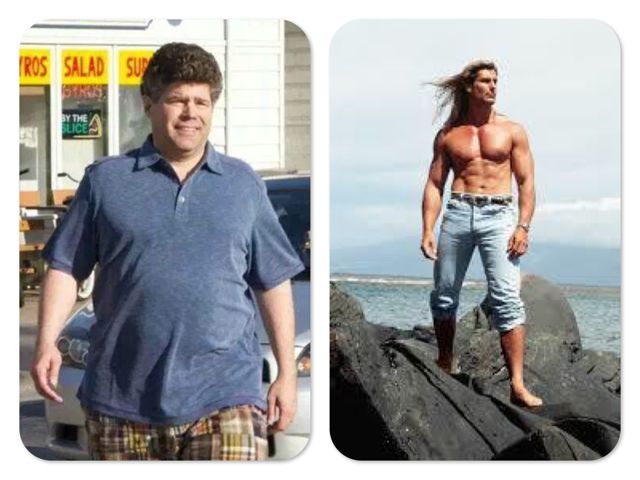
Serious before and after:
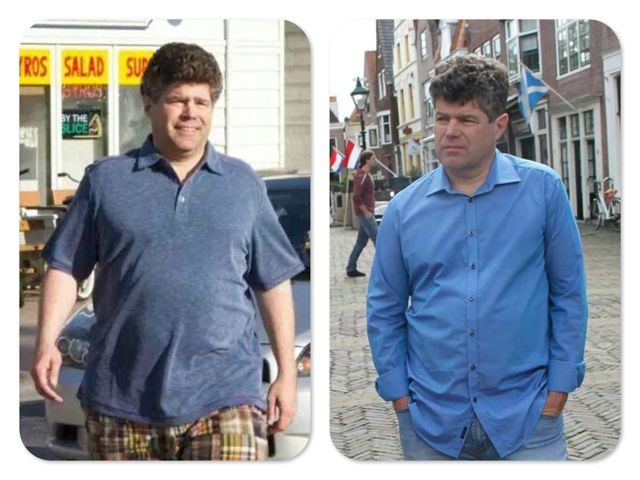
By Josh Bowen, on Thu Aug 28, 2014 at 8:30 AM ET  Of all the types of questions a fitness professional is asked, nutrition is the most common subject. Quite frankly people are clueless when it comes to what they eat. Conversely, that is not their fault. In this country we search for the quick fix, the easy way out and our media has done a great marketing job on “diets.” These diets usually consist of restriction some selection of food; fat, carbs, meat etc. So we are constantly told what we “shouldn’t” eat and rarely are we told what we should eat. So I wanted to put together a list of 10 foods that most everyone needs (barring food allergy, religious reasoning or preference). These 10 foods have various purposes that go beyond how many calories they consist of. These foods help the body ward off disease, decrease inflammation, and add vital vitamins and minerals to our body. Of all the types of questions a fitness professional is asked, nutrition is the most common subject. Quite frankly people are clueless when it comes to what they eat. Conversely, that is not their fault. In this country we search for the quick fix, the easy way out and our media has done a great marketing job on “diets.” These diets usually consist of restriction some selection of food; fat, carbs, meat etc. So we are constantly told what we “shouldn’t” eat and rarely are we told what we should eat. So I wanted to put together a list of 10 foods that most everyone needs (barring food allergy, religious reasoning or preference). These 10 foods have various purposes that go beyond how many calories they consist of. These foods help the body ward off disease, decrease inflammation, and add vital vitamins and minerals to our body.
1. Eggs- Eggs are on this list for a variety of reasons; the whites are full of high biological value protein (that is a good thing), the yellow is full of leptin (which controls appetite) and they are extremely versatile (scrambled, poached, boiled etc.). Eggs also have 12 vitamin and minerals, one of which (choline) is vital for brain development and increased memory. Eggs are nutrient dense only containing 75 calories per egg.
2. Nuts- If you only look at foods based upon their fat content and calorie count you would probably leave these section of food out. You would be missing the point of the article. Yes calories matter, however a twinkie may have less calories than a Big Mac that does not mean it is a good option. Most nuts are loaded with Omega 3 fatty acids that are good for the cardiovascular system and act as an anti-inflammatory warding off potential disease. Also nuts are considered an antioxidant which has the potential to decrease the potential for cancer. Because most nuts are high in fat, thus high in calories, use proper judgment and portion control and monitor the salt as well. Almonds, cashews, pistachios are all good choices.
3. Sweet Potato- One of my all-time favorite foods that packs a punch and is nutrient dense. Sweet potatoes are technically a vegetable, although we rarely think of them in that way. Their dark orange coloring makes them high in Vitamin A and C and an outstanding source of potassium. Diabetics can enjoy these foods because they are lower on the glycemic index than white potatoes, generally because of their high water content. Sweet potatoes also act as an anti-inflammatory.
4. Broccoli- Another one of my all-time favorite foods. Without the cheese, broccoli is a true super food that is packed with potassium a rich source of Vitamin A, C and K. It can be very beneficial for diabetics because of its high fiber content. Just remember, no chees
5. Apples- Not all fruits are created equal. Some are good and some are not. Apples however are unique, the skin is full of fiber (blunting the insulin effects of sugar) and they have high antioxidant content. Apples have been linked to prevent lung cancer, improve lung function and help prevent Type II diabetes.
6. Salmon- the American Heart Association recommends eating salmon twice per week because of the high Omega 3 content. It is low in calories, high in protein and low in saturated fats. If at all possible choose fresh salmon versus farm-raised.
7. Kiwis- They are a nutrient dense food that has an entire days requirement of Vitamin C in one large kiwi. Also high in fiber and potassium and a good source of Vitamin A and E. Great taste and texture makes this fruit a great super food.
8. Beans- Beans are loaded with insoluble fiber which is great for ridding the body of unwanted waste. These are heart healthy foods which are low fat good source of protein. Beans are versatile, they can be a good side dish, a great substitute for meat and chicken and can also be mixed in with other foods to make a great snack.
9. Quinoa- What? Yea Quinoa (pronounce keen-wa) is an ancient grain that is now readily available in health food stores and sections of your commercial grocery stores. Its high in protein and fiber and a good source of iron. It is as easy to prepare as rice and can be combined with nuts and beans as a good meal.
10. Berries- pack an incredible amount of nutritional goodness into a small package. They’re loaded with antioxidants, phytonutrients, low in calories, and high in water and fiber to help control blood sugar and keep you full longer. And their flavors satisfy sweets cravings for a fraction of the calories in baked goods. Blueberries lead the pack because they are among the best source of antioxidants and are widely available. Cranberries are also widely available fresh, frozen, or dried. All can add flavor and nutrition to numerous dishes, from salads and cereals to baked goods and yogurt.
So instead of focusing on foods you shouldn’t eat, concentrate on the foods you should. Start incorporating the above and watch your health increase dramatically which will vicariously help you reduce body fat, lower your blood sugar and help you build more muscle. Let me know if you have any good recipes!
|
The Recovering Politician Bookstore
|


















